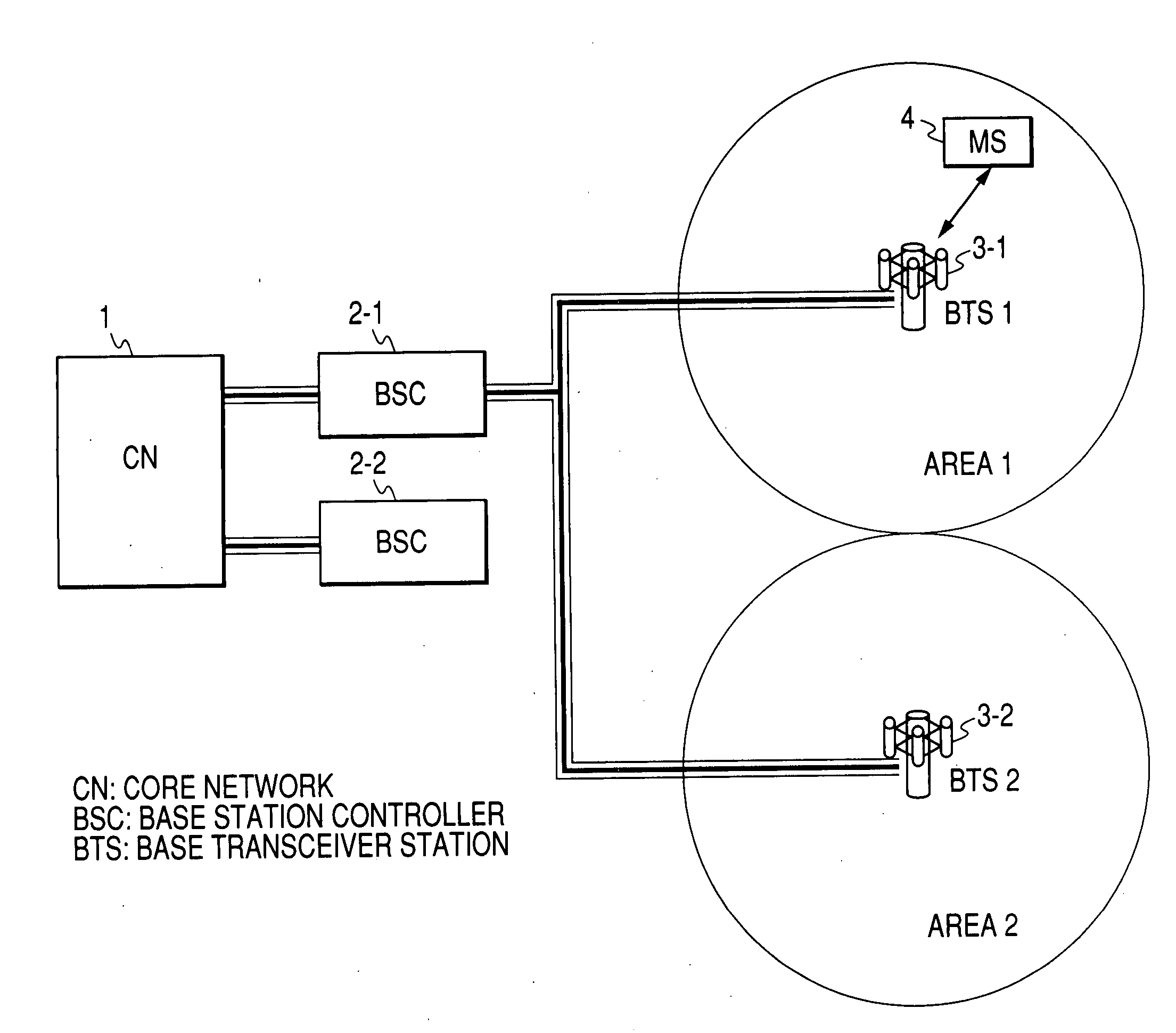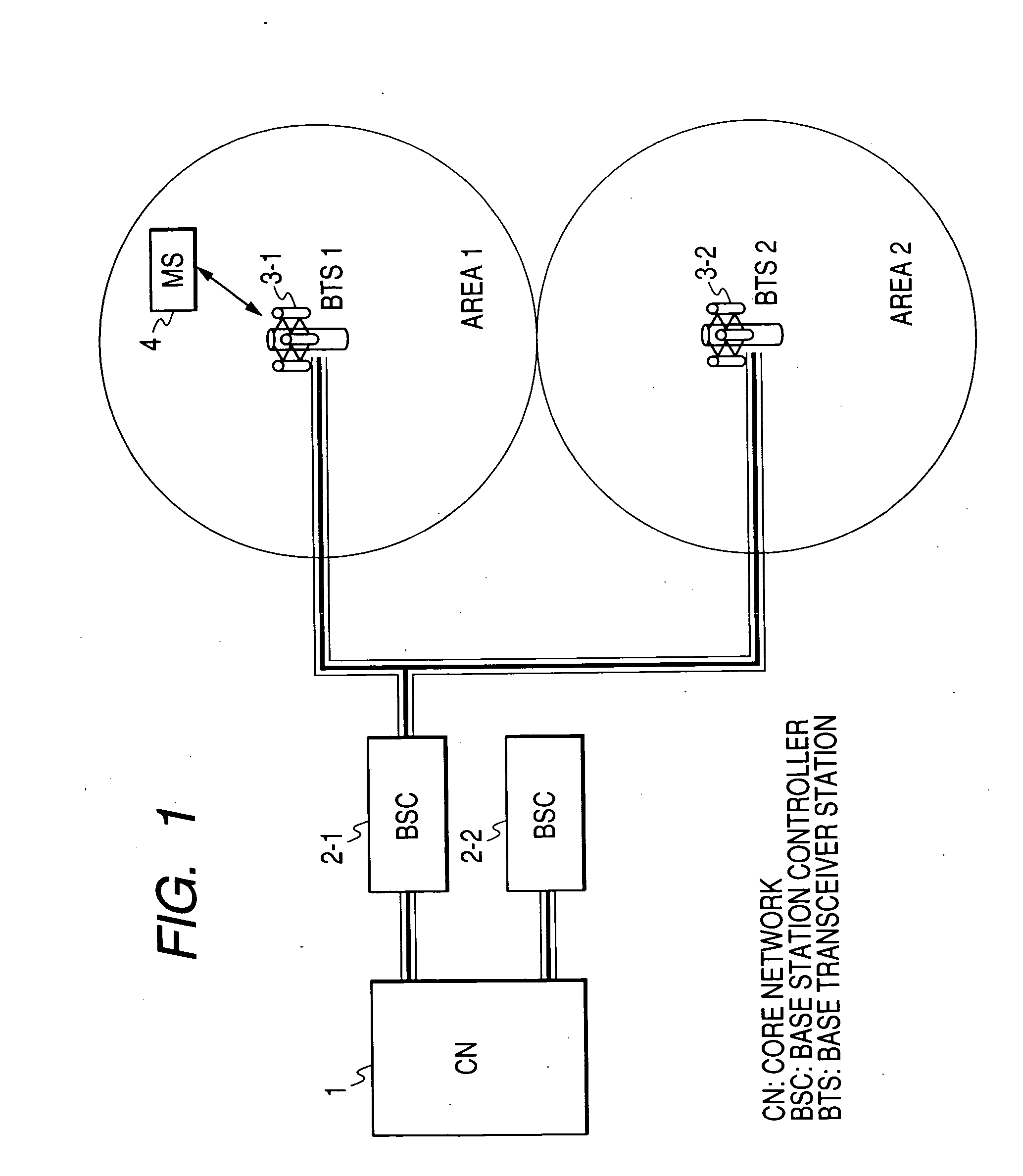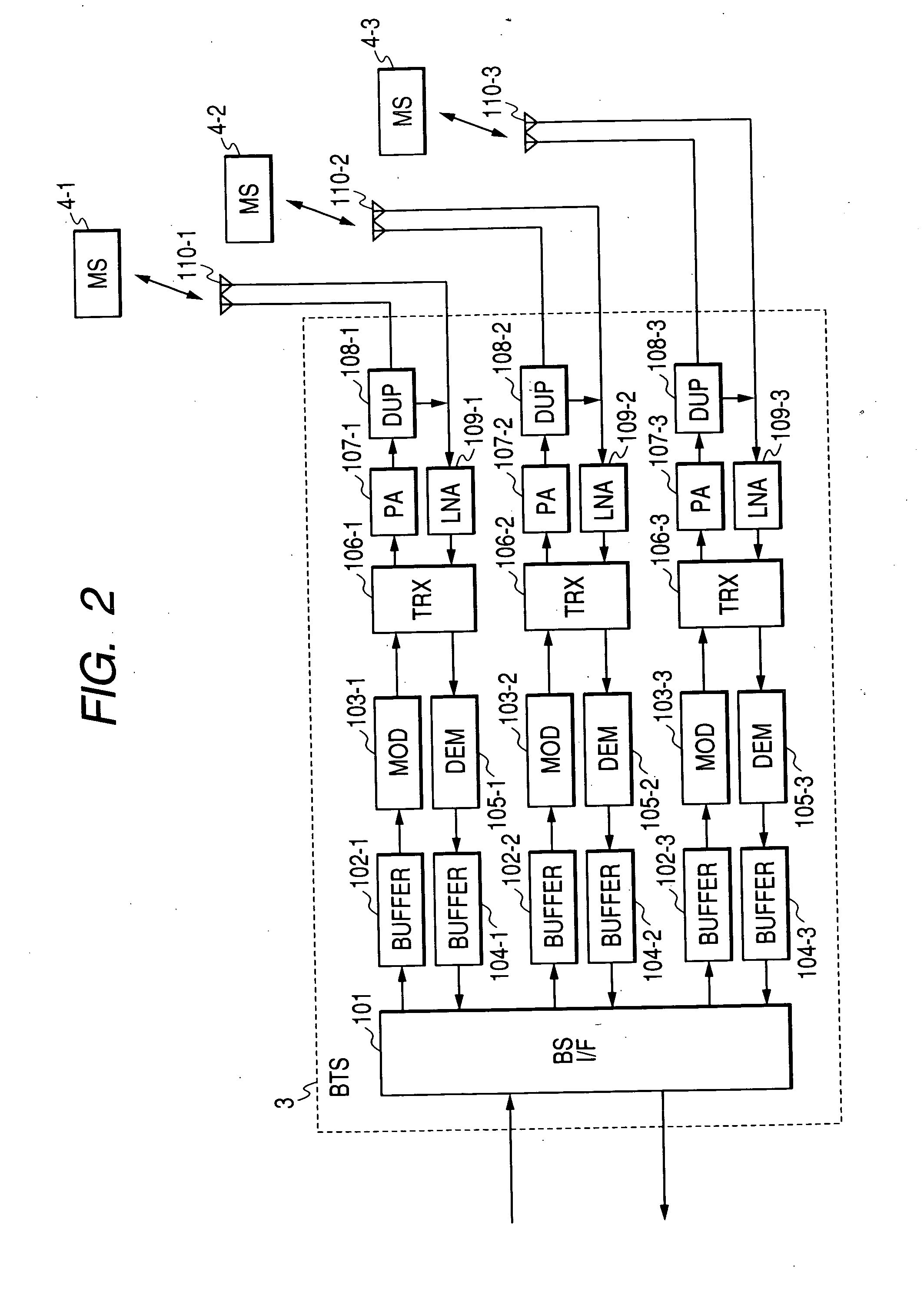Base station apparatus and control method for controlling channel density
a base station and channel density technology, applied in diversity/multi-antenna systems, wireless communication, multi-plex communication, etc., can solve the problems of delay of response, increased cost of moving the movable base station, and additional costs including the movement cost of the movable, so as to increase the maximum accommodative channel number, increase the number of simultaneously communicable terminals, and adaptively control the channel's area density
- Summary
- Abstract
- Description
- Claims
- Application Information
AI Technical Summary
Benefits of technology
Problems solved by technology
Method used
Image
Examples
Embodiment Construction
[0031]FIG. 1 shows a network configuration of a cellular communication system. A core network 1 is operable to deal with position registration and attestation and accounting services of subscriber terminals, such as cellular phones, and also perform the routing of data and audio / voice signals. A base station control device 2 is equivalent in functionality to a radio network controller (RNC) or a base station controller (BSC), for performing voice transfer rate conversion and the assignment of a radio channel to a terminal in accordance with a call-in from another terminal or a call-out from the terminal that is present in an area which is managed by the base station control device. A base station 3 corresponds to a base transceiver station (BTS), for applying encoding and modulation to the data or voice signals as sent from the base station control device 2 and for performing communication with a terminal 4 by using a radio link. Adversely, for data and voice signals as sent via a r...
PUM
 Login to View More
Login to View More Abstract
Description
Claims
Application Information
 Login to View More
Login to View More - R&D
- Intellectual Property
- Life Sciences
- Materials
- Tech Scout
- Unparalleled Data Quality
- Higher Quality Content
- 60% Fewer Hallucinations
Browse by: Latest US Patents, China's latest patents, Technical Efficacy Thesaurus, Application Domain, Technology Topic, Popular Technical Reports.
© 2025 PatSnap. All rights reserved.Legal|Privacy policy|Modern Slavery Act Transparency Statement|Sitemap|About US| Contact US: help@patsnap.com



